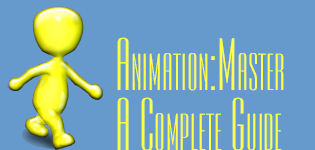 Q & A
Q & A
Q:
How important are drawing skills to a 3D animator?A:
3D animation is a visual medium and many of the ideas that we want to get across to other people are best shared in images, so even if it’s just a rough concept sketch there is some level of drawing needed in most projects. Also since the creation of compelling images in 3D uses the same principles of composition as drawing and painting, learning more about one will augment the other. If you are interested in being a professional animator, consider it a mandatory requirement. If you are trying to please only yourself and possibly make some short films it may not be required but certainly wouldn’t hurt.
Q:
How do I make good hair?
A:
We have talked about this to some extent already, but this question was so popular that it seemed to merit quickly summing up the techniques involved and offering some direction for exploration. The first thing that is required is to know your tools. The second is to make the decision of how much detail will be enough detail. Often we can get away with less than absolute realism, many great animations were made before 3D hair was possible in any form. Once we have these two things covered we need to decide how to proceed, we have two basic ways to create hair for a model: modeling and mapping or using dynamic hair simulations. Explore the first solution if you can.
Q:
I have heard that I should never use bias when modeling. Is this true? If so, why not?
A:
We discussed bias in Chapter 2, including some of its pros and cons. However, you should try to model without it as much as possible. There are times when a tweak of the gamma will set a lumpy model to rights, but it takes a lot of experience to know when a gamma can be tweaked and how far it can be pushed. For the beginner, it is recommended that you avoid bias, at the very least for nonmechanical applications.
Once you have more experience with the tools and you feel confident with it, though bias manipulation can be a very powerful and time-saving tool.Q:
Are constraints absolutely necessary to animating characters?
A:
The short answer is no. You can animate a character with only bones in it, or even without bones. But creating a simple rig to do things, such as keep the feet isolated from the hips and control the eyes, you will find that your animation time is spent more productively. You don’t have to make the most complex character rig in the world, and once you have designed a simple rig moving it between characters is a snap.
Q:
What do I do withmy animation when it's done?
A:
Show it off! You can get free Web hosting, and share your animations with your friends and family and the A:M community. Posting to the Web is a great way to get critiques on your work. If you want to get a job in the animation industry this is a crucial step; getting critiques helps us analyze our own work. Either way, you will want to make your animation available for everyone to see and the Web provides the perfect outlet. A good place to start is at A:M Films.
Q:
What does it take to get hired in animation?
A:
The obvious first requirement is talent. Professional animation is a demanding field that requires good results in a short time, so before you are hired studios want to know that you can perform. The tool they use to judge this with is called the demo reel. A demo reel is crucial to presenting your work and getting your foot in the door. The format for a reel is typically NTSC VHS tape, every so often someone will ask about submitting a CD, or a DVD. Unless the job description specifies those as valid formats, stick with VHS. Your reel will need 3 minutes or so of solid character animation on it, accompanied by a resume and a brief cover letter. Contrary to popular belief it is not the program you used to create the reel that matters so much as the skill and ability demonstrated on it. If your first reel doesn’t get you a job, keep practicing and animating. Like most things a little hard work and dedication will take you a long way.